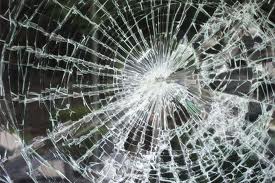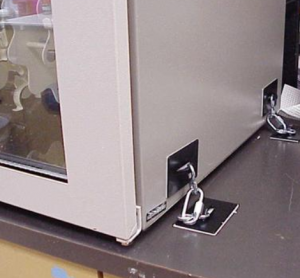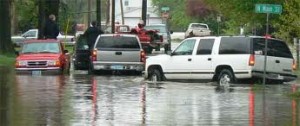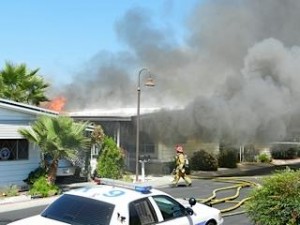In a collapsed building
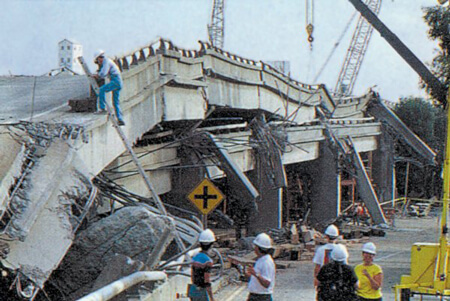
Who will get there first?
I don’t know about you, but as I watched television the aftermath of the 1989 Loma Prieta earthquake in San Francisco and again following the disaster in Haiti, one thing sent chills down my spine — the thought of people pinned alive and injured below fallen concrete, smashed cars and collapsed buildings, waiting for rescue, waiting, waiting . . .
By way of a side note here: My partner, Virginia Nicols, was lecturing in Silicon Valley the day the Loma Prieta quake struck. She and two colleagues were discussing the subject of her evening lecture over dinner in a restaurant.
The three of them went under the table and were uninjured, but damage to the restaurant was extensive with broken glass and fallen shelves throughout. They emerged onto streets with no traffic lights, no sound coming from the car radio. This was before everyone had a car radio or a cell phone. I set up an automatic re-dial and got through to her about 2 hours after the quake hit.
The day after she came home (we were living on the East Coast then) we went dining and dancing at a local club. The fact that it was in an old, refurbished-brick building that would not likely withstand even a light jolt proved so distracting to her that we had to leave 10 minutes after we had arrived. It took her more than a year to be able to spend time in what her whole being told her were potential death traps.
And if it were you?
Imagine being buried alive, lying in the darkness, not knowing what the situation is above ground and wondering if anyone would find you before you die. Imagine having no way of letting your family, co-workers or friends know that you are indeed alive and desperately in need of help.
How to let people know your whereabouts?!
You might immediately think of the emergency alert devices that are particularly marketed to senior citizens living alone. (“I’ve fallen and I can’t get up.”)
When you think further, you realize that all of these devices cost money (usually a monthly subscription), operate via cell phone transmission, have specific geographic or protocol limitations and all have fairly expensive price tags.
Cell phones certainly are among the most widely available devices for letting people know where you are and what your condition is in an emergency. But whom do you notify? What if your battery dies? What if the cell phone towers in your area are damaged from the emergency, overloaded with phone traffic or simply inoperative?
The reality is that cell phones have limited reliability in an emergency and, depending on the carrier, they may or may not perform well inside of dwellings. Without electricity, batteries cannot be recharged so the cell phone may only have a limited life. And, where the best advice is to have out-of-the-area contacts to call (to avoid overloaded local phone lines), this only works if you even have the ability to call out on your cell phone.
And, I don’t know about you, but I would find it difficult to have the discipline to wait for several hours to make distress calls in the hope that cell phone service would be restored anytime soon.
Is there an answer?
Well, maybe there are a couple . . .

Low tech yes — but it will always work!
First, the low-tech answer. I don’t see a lot of people adopting it, but it makes some sense. What is it? A simple noisemaking device called a “whistle.” I’m not sure what kind of a fashion statement it makes to wear a whistle around your neck every day, but maybe an unobtrusive one on a key chain could avoid some of the potential snickering . . . especially in the work environment.
Something to think about, depending on your daily routine.
As for high-tech option, consider social media to contact people you are connected to. Again, this depends on whether or not you have wireless access or even whether or not you run you life by your smart phone. Using your cell phone requires, of course, that you know how to TEXT. (Here’s an Advisory that explains how to text for those who don’t yet do it every day.)
This is definitely a subject that warrants more conversation and there is no one or easy solution. For now, I am looking for some more low-tech solutions.
Joe Krueger
Your Emergency Plan Guide Team
